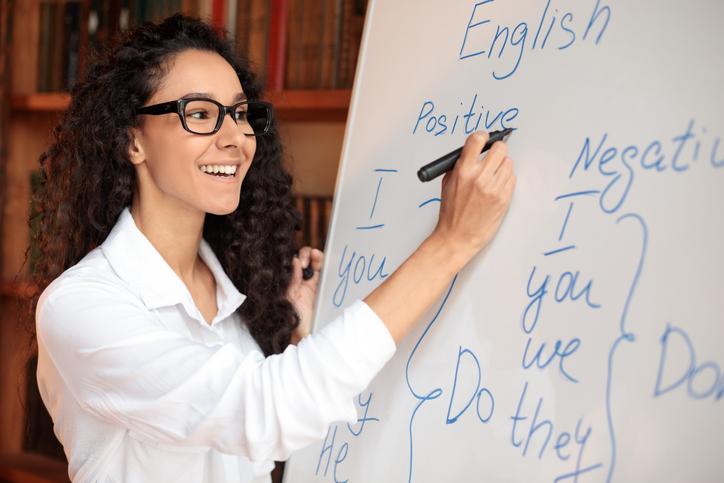For international students whose first language is not English, a writing course can be among their greatest challenges. In particular, first-generation learners may need help adjusting to a new learning environment made up of various languages and ethnicities. However, the impact of a writing course can go far beyond its learning outcomes, helping students form bonds with those from other countries and enriching their international experience.
Writing courses involve working with students to make their English error-free and polish their style. Teaching a writing course to a diverse group of students comes with its own challenges, especially when the class speaks and interacts in many languages as well as English. Although the presence of multiple languages and cultural contexts could be considered an impediment to learning, this diversity can actually be helpful in speeding up the process.
- Supporting international students in their transition to US institutions
- Breaking language barriers: supporting non-native English-speaking students
- Introducing ‘translanguaging’ – and other ways to promote multilingualism
Here are some strategies that can help a diverse group of students transition to university, while also meeting the learning expectations of the course.
Pair up
International student groups tend to divide themselves along ethnic, linguistic, gender or religious lines. Students can benefit from international exposure by mingling with their counterparts from different backgrounds. For a writing course I recently ran, I divided the class into pairs and named them writing buddies. Given the strict deadlines of the semester and limitations on the instructor as to how much personal attention can be given, this peer group worked wonderfully. But it’s important to choose the writing partners carefully – here’s how:
- Choose partners of similar ability based on an ungraded writing and speaking test, because the pressure of grades could hinder the process of getting to know the students better (including their academic and social background).
- Harness the diversity of the classroom when forming partnerships. For instance, I paired Indian boys with Zanzibari boys, Zanzibari girls with Indian girls, Zanzibari girls with Zanzibari boys. One of the immediate results of this process was that everyone started pronouncing each other’s name correctly.
In some cases, the pairing might not work and the instructor should strive to find out why. For example, two students from different countries may not want to be paired up and will only work with students from the same country – you can discourage this line of thinking. But if both the students are introverts and find it extremely difficult to communicate with each other, alter the pairing.
Adapt the syllabus
Structure the course syllabus with tasks designed to be done together. Students tend to only focus on their own writing and how they can rectify their mistakes. The writing buddy experiment forces a change in this approach. In giving feedback to their partner, students can become more aware of the writing process as they’re faced with their own errors. For example, one student, while correcting the other’s excessive use of commas, became aware of his own punctuation mistakes, specifically the use of periods.
Texts from diverse backgrounds can be used so that students can help each other understand cultural references. I chose reading materials from African and Indian contexts, allowing buddies to explain cultural peculiarities and connotations in measurement units such as feddan, cow dung cakes known as uppala, used as fuel in India, and food items such as pakori (fritters). Students were also able to find common ground with similar kinds of foods and eating habits through these discussions, which led to writing about food and memory. This kind of exercise helped in expanding vocabulary, writing with care, cultural sensitivity and forging bonds based on similar experiences.
Change the grading pattern
The weekly course material should provide discussion points, which can be themes for the partners to write on through the week. That way, the course material is woven into their writing practice and graded.
Of course, there should be individual grading depending on the nature of the class but this kind of group writing exercise can be assessed throughout the semester. Factor in the amount of work put in by the partners and the quality of feedback they receive. I witnessed remarkable growth in both the supposedly weak students and the “better” ones, not only in terms of grades but in self-reflexivity.
By the third week of my class, students began making jokes about their partners, acknowledging their strengths while admitting their own weaknesses – a welcome change for a class that had previously stuck to their own homogenous groups. Gradually they overcame their initial reluctance and started to help each other. This went beyond the writing course. In other classes, too, some of them sat together and helped each other with their studies. Some joined the jogging club and became running mates.
The time frame may differ depending on the nature of the classroom, but learning together for many first-generation learners in an international university set-up can ease the transition to university. Peer group networks, besides being sites of solidarity, can be turned into valuable resources and avenues of knowledge-sharing.
Umasankar Patra is assistant professor of English at IIT Madras.
If you would like advice and insight from academics and university staff delivered direct to your inbox each week, sign up for the Campus newsletter.




comment